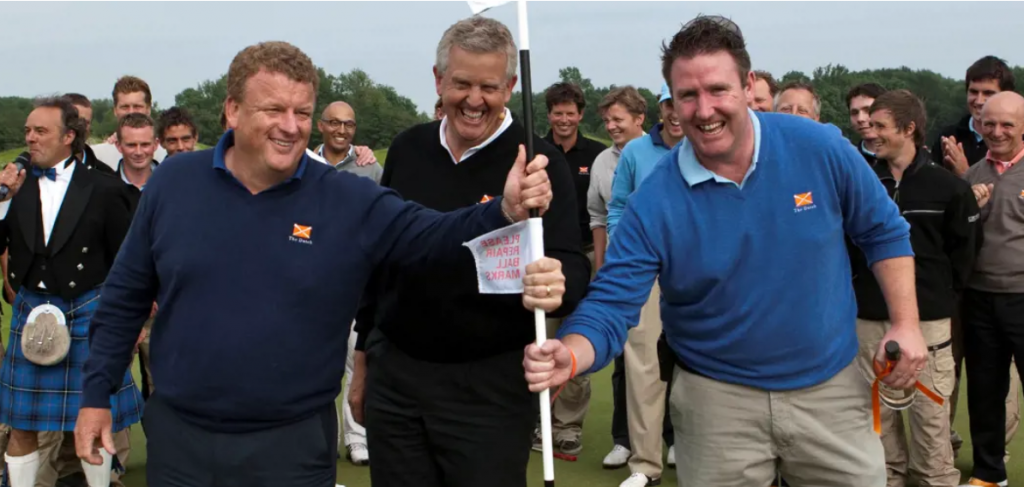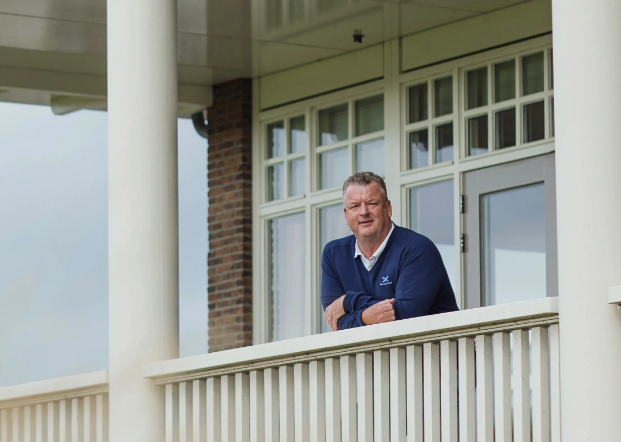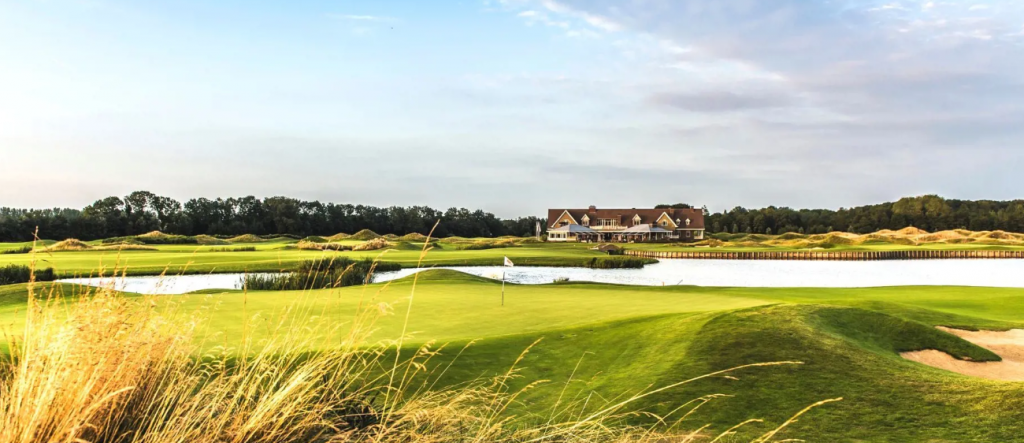Build it and they will come. Although it’s a phrase borrowed from 1980’s baseball movie Field of Dreams that is often trotted out whenever a new venture tries to get off the ground, it’s a sentiment that must have surely been in the forefront of the minds of a handful of dream-filled pros when they first came up with the idea of building a high-end links-style course on what must have looked like a rather unpromising piece of land 25 miles east of Rotterdam somewhere towards the beginning of the noughties.
The Made in Scotland team – the name the original founding owners David Burnside, Alan Saddington, Jonas Saxton, Mauk de Booij, Tim Giles and Phil Helsby, gave themselves when the idea was first mooted back in 2001 – opened The Dutch Golf Club in 2011 to much fanfare.
They were inspired by the experience they had enjoyed at such clubs as Loch Lomond back in the day, and wanted to recreate that experience in mainland Europe, and more specifically The Netherlands, where nothing of this nature existed.

Construction began in early 2008, dealing first with the engineering solutions required to shape flat farmland that was several metres below sea level into a championship golf course. Radical shaping was used to create a rugged golf course with undulating fairways framed by dramatic mounding. Out of necessity on land which is below sea level there are also many water features, with several lakes, streams and canals coming into play as well as serving a drainage facilities.
Colin Montgomerie was also involved in the design of the course, which Scotsman Phil Helsby, the club’s energetic managing director, says could best be described as an inland links.
“The concept here was to combine influences from links and heathland golf courses with some modern flair to create an individual style that was unique to The Dutch,” says Helsby, who is the only one of the founding members still directly involved with the club on a day-day basis.
“We wanted to establish an immediate ‘wow’ factor and then back that up with good strategic design. I really like the way that the challenge builds as you go around the golf course. From a relatively gentle start, the course keeps ramping up the challenge and the back nine especially represents a true test.”
The course drew instant praise and plenty of accolades, and after hosting events on both the Challenge Tour and the European Senior Tour, The Dutch put itself properly on the map with the hosting of three editions of The Dutch Open between 2016-18. The first year of the tournament coincided with a failed bid to host the 2018 Ryder Cup, which showed the scale of the ambition that The Dutch’s owners had for the venue.

Although tournament staging helps get a club on the map, as does bidding for a Ryder Cup, Helsby says the main driving force behind the club was to provide a home from home for its members, whether they be local businesspeople, or those travelling from further afield. “We started The Dutch with the dream that we wanted to create a special place where businesspeople could play golf at the highest level,” he says. “The important thing was to create the right atmosphere, with a nice clubhouse, where the members feel happy and they feel like it’s an extension of their home and their family. Where they feel welcome, and their guests feel welcome. We called it ‘The Dutch Experience’.
“For me, that experience is best exemplified when a member brings a guest and the guest is treated the same way as the member from the moment they drive through the gates, to the moment they are met at the valet parking, to the moment they go into the locker room, and when they experience all the other things at the club has to offer, like the bar or the restaurant or the whisky and cigar room. We want people to come away from here feeling that they had a great experience and that they would like to come back again. We see golf as a tool to bringing people together.”
Now well into it second decade of existence, The Dutch is currently going through something of a transition, with co-founder Helsby being the only one of the original six investors to remain actively involved in the club as the others wind down into gentle retirement. Despite the changes, Helsby is confident that the club is heading in the right direction and that they have the right people in place to take the club forward.
“The foundations we have in place are very solid,” he adds. “The Dutch is healthy, the future looks very good. Together we will shape the policy and vision for the future. But first, everyone within the organisation who has been given a different or adapted position is given the time and space to settle in and get used to his or her position and their responsibilities.
In the past few years, The Dutch has taken steps to freshen up the team, taking on the services of Robert Stevens as commercial director, who also sits on the board, while several younger PGA Professionals, including Graeme Brown, Oggy Robertson and Giesbert Gommers, along with a new F&B manager Rutger Smits, have also joined the staff, which currently numbers 125.
Says Phil: “Everyone we have hired is someone who were think has the right DNA to come on board and ensure the future success of the club. The Dutch is a kind of family business with its own identity. That should never go away. We are passionate about offering high level of hospitality and service and that very special DNA – the feeling, the passion for the work – is something everyone who works here must have. Of course, this doesn’t always make the search for new staff easy, but it certainly helps when coming to decide who to hire.”
What matters most to Helsby and his team is that the special bond with the members is maintained.

“Many members have come here in the past because of the founders, just as we can now welcome young people who are building a close relationship with one of the new pros or one of the other colleagues. We can’t deny that when we started Made in Scotland we tended to be younger than our customers, now the picture is the exact opposite. Fortunately, a young group is coming in that can take over and understand how it works. The management changes have few visible consequences for the membership. They can, as they are used to, fully enjoy their membership and the course with all its facilities, including a new Tour-standard short game practice area which has recently opened up next to the driving range and academy”.
All in all, The Dutch is a club that will never rest on its laurels, however much they are deserved, and that, in large part, is thanks to the drive of those six bold PGA Members who had the vision and the drive to try something new and, above all, to see it through.

